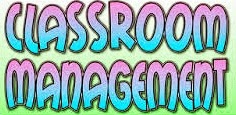This is the first of my Weekly Writing assignments for AEE412: Methods of Teaching Agriculture. These writings will allow me to reflect on the readings and share my reactions to them as well as the class activities and discussions.
Wong, Part A
Reading about the basic understanding to being a successful
teacher was very beneficial. The reading started out talking how important it
is to have a great first day of class. It talked about have control of the
classroom is crucial to the success of the school year. Control of the classroom
means that as the
teacher, you know what you are doing. You also know your
classroom procedures and all of your professional responsibilities. Along with
this it is important that your students know that you know what you are doing.
I also learned about the four stages of teaching from this
reading. The first stage of teaching is the fantasy stage. In this stage
teachers believe that they cannot fail. They also believe that they need to
relate to students and be their friends in order to be successful. The second
state of teaching is the survival stage. In this stage teachers rely on ineffective
practices just to help them get through the day. They often are more focused on
the paycheck they will receive rather than what they are actually teaching. The
third stage is mastery. In this stage teachers know how to manage their
classroom and they have higher expectations for their students. They teach to
make a difference.
The final stage is impact. In this stage you will fulfill
your dream of making a difference in the lives of your students. You will also
have a sense of pride knowing that you affected your students’ lives. I feel
that I am somewhere between the fantasy stage and the survival stage. I am just
getting started on my teaching journey and I can’t wait to see how I work
through each of these stages.
The reading then went on to talk about the difference
between being an efficient teacher and being an effective teacher. Efficient
and effective are very similar but have different meanings. Being efficient
means you are doing things right. Being effective on the other hand means that
you are doing the right thing.

An effective teacher has positive expectations for student
success, is an extremely good classroom manager, and knows how to design
lessons for student mastery. I think that I will struggle most with classroom
management. I am looking forward to learning more about how to be an effective
classroom manager this semester.
Along with being an effective teacher means having an
effective classroom. In order to have an effective classroom you must have a
well ordered environment + positive academic expectations. I think having
positive expectations are incredible important. I also think it is interesting
how discipline has little to do with classroom management. “you don’t discipline
a store; you manage it”
Enhancing Student Learning Through Teacher Behaviors
This article began by talking about how agriculture teachers
are some of the best teachers in the world. But why? Rosenshine and Furst reviewed
fifty studies and identified eleven teacher behaviors that were associated with
student achievement.
From their studies they found five behaviors that provided
the greatest opportunity to influence student achievement. The first behavior was
clarity. To achieve clarity teachers should be sure that what they are teaching
has organization and structure. I think that clarity is especially important
when giving instructions to students.
The second behavior is variability. Teachers should working
in a variety of teaching methods and techniques to ensure that the students are
learning to their full potential. Every student learns in a different way and having
different methods of instruction can be very beneficial!
The third behavior is enthusiasm. This is one that I feel is
very important. “Enthusiasm is contagious.” Teachers who are enthusiastic
create a student interest in learning. I think that this is especially
important in subjects where students might not be as interested.
The fourth behavior is task oriented and or businesslike
behavior. Rosenshine and Furst reported that teachers who were characterized by
task-oriented behavior were more concerned with student learning rather than
students enjoying themselves. I think that when teachers are more task-oriented
students know what is expected of them and they know what to do.
The final behavior recognized by Rosenshine and Furst is the
extent to which teachers provide opportunities for students to learn the curriculum
material as prescribed by performance objectives and included on students
evaluations.
 I chose to bring along my genetics unit plan and I had no idea what I was going to buy at the Dollar Store to help teach one of these lessons. When we got there I looked around for a while trying to get
I chose to bring along my genetics unit plan and I had no idea what I was going to buy at the Dollar Store to help teach one of these lessons. When we got there I looked around for a while trying to get .jpg)

































